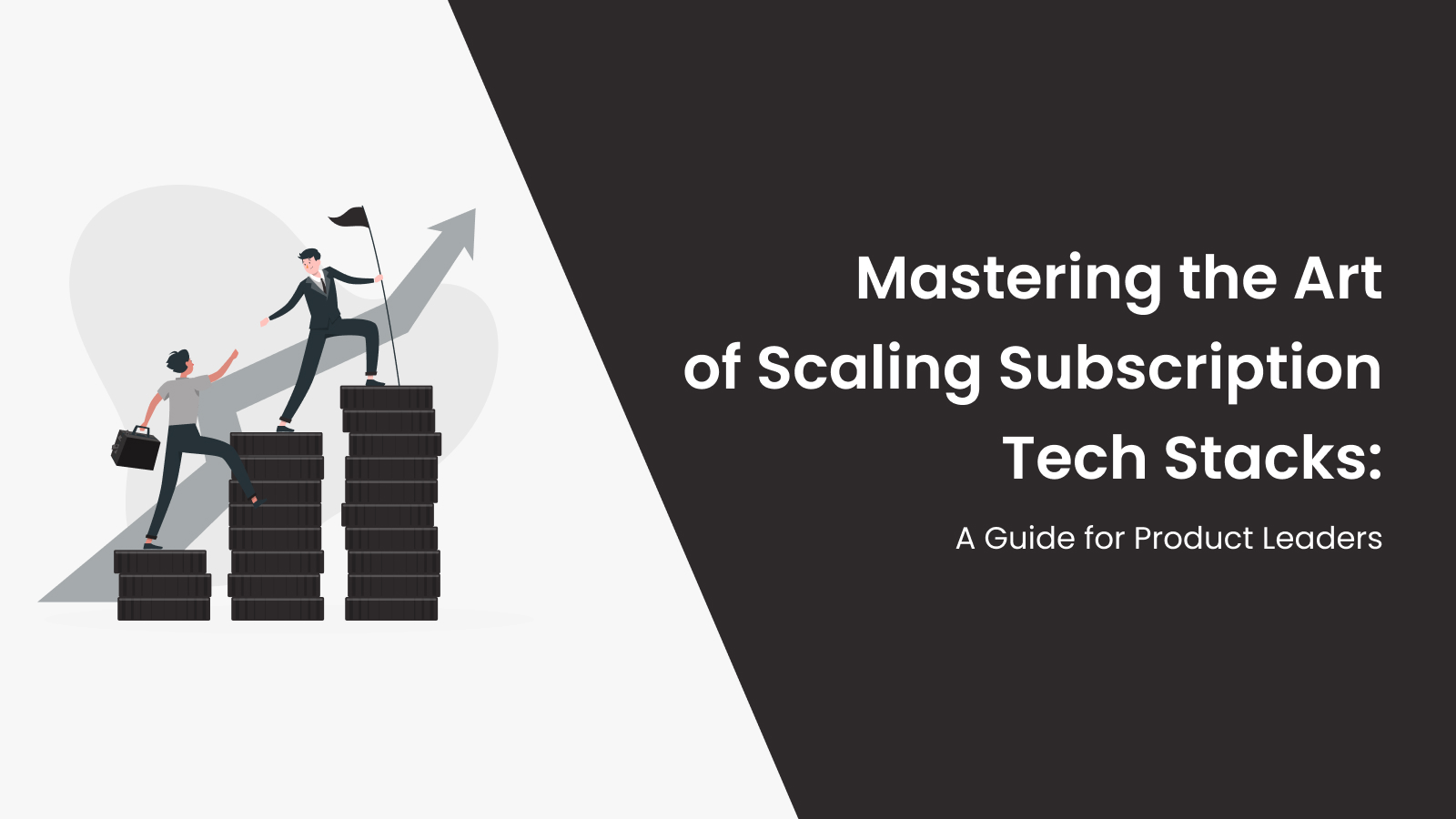
Introduction :
In today’s digital landscape, subscription-based business models have gained immense popularity across various industries. From streaming services to software-as-a-service (SaaS) solutions, subscriptions offer convenience, flexibility, and recurring revenue streams. However, as companies grow and acquire more customers, they often face challenges in scaling their subscription tech stacks effectively. This blog will explore the art of scaling subscription tech stacks and provide valuable insights and strategies for product leaders to navigate this process successfully.
Understanding Subscription Tech Stacks:
Before diving into the intricacies of scaling, let’s define a subscription tech stack. It refers to the combination of tools, software, and systems that enable businesses to manage and deliver their subscription-based products or services. This stack typically includes billing platforms, customer relationship management (CRM) systems, analytics tools, marketing automation, and more.
The Challenges of Scaling Subscription Tech Stacks:
Scaling a subscription tech stack can be a complex endeavor, presenting several challenges for product leaders to address. Some of these challenges include:
Scalability: As a customer base grows, the tech stack needs to handle increasing volumes of data, transactions, and interactions without sacrificing performance or user experience.
Integration: With multiple tools and systems involved, ensuring seamless integration and data flow between different components becomes critical for maintaining efficiency and accuracy.
Flexibility: As business requirements evolve, the tech stack should be adaptable enough to accommodate changes in pricing models, plan structures, and new product features without disrupting operations.
Customer Experience: Scaling should not compromise the customer experience. The tech stack should allow for personalized interactions, timely notifications, and easy access to subscription management features.
Case Study:
Netflix :To illustrate the principles of scaling subscription tech stacks, let’s examine the success story of Netflix. As a pioneer in the streaming industry, Netflix faced numerous challenges during its rapid growth phase.
Scalability: Netflix experienced exponential growth in subscribers and had to ensure its tech stack could handle massive data volumes and high streaming demands. By leveraging cloud computing and adopting a microservices architecture, they achieved seamless scalability.
Integration: Netflix invested in building robust APIs that allowed for seamless integration between its various systems, including content management, recommendation engines, and billing. This integration enabled smooth customer experiences and streamlined operations.
Flexibility: Netflix continuously experiments with pricing models, plans, and content offerings. Their tech stack allows for easy plan changes, billing adjustments, and personalized content recommendations to cater to diverse customer preferences.
Customer Experience: Netflix prioritizes personalization and engagement by utilizing sophisticated algorithms to recommend content, sending tailored notifications, and providing a user-friendly interface for managing subscriptions.
Key Strategies for Scaling Subscription Tech Stacks:
Evaluate and Optimize: Regularly assess the performance and efficiency of your tech stack components. Identify bottlenecks, redundancies, or outdated tools and optimize your stack accordingly.
Prioritize Integration: Foster seamless data flow and collaboration between different systems by prioritizing integration capabilities. APIs and middleware solutions can facilitate this process, enabling real-time data synchronization and reducing manual efforts.
Embrace Cloud Computing: Leverage cloud-based infrastructure and services to ensure scalability, high availability, and disaster recovery capabilities. Cloud platforms offer flexibility and cost-effectiveness, allowing you to scale resources as needed.
Automation and AI: Implement automation and AI-driven technologies to streamline processes, such as billing, provisioning, and customer support. These technologies can enhance efficiency, reduce errors, and provide personalized experiences at scale.
Data-driven Insights: Leverage analytics tools to gather actionable insights on customer behavior, usage patterns, and subscription metrics. Use these insights to optimize pricing, plan structures, and identify upsell/cross-sell opportunities.
Conclusion:
Scaling subscription tech stacks is a vital aspect of achieving sustainable growth for companies embracing subscription-based business models. By understanding the challenges, learning from successful case studies like Netflix, and implementing key strategies, product leaders can master the art of scaling their tech stacks effectively. Prioritizing scalability, integration, flexibility, and customer experience will empower businesses to stay ahead in the subscription economy and provide exceptional value to their customers.

